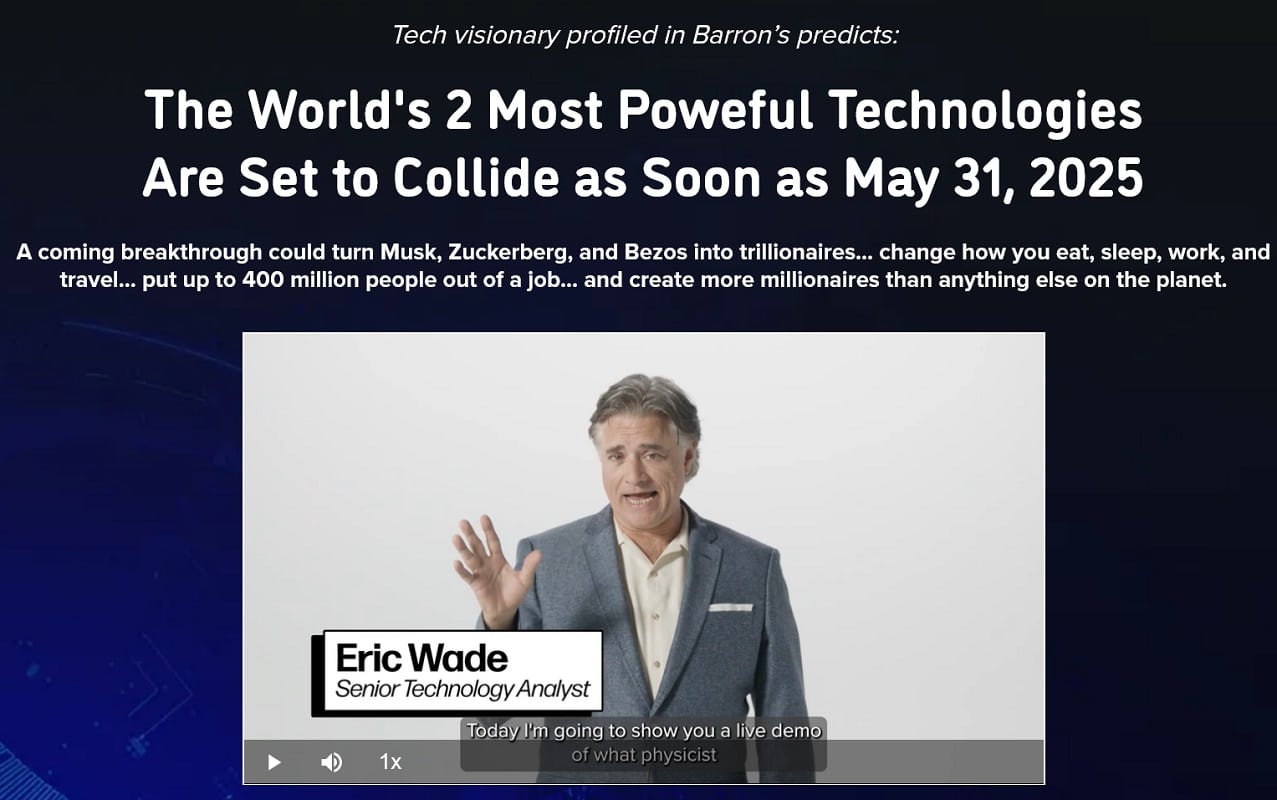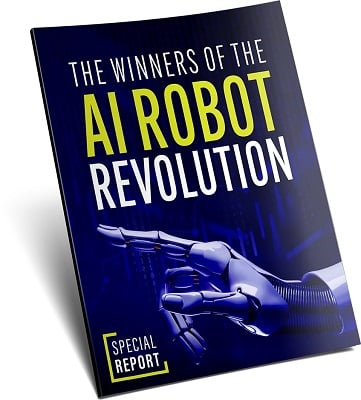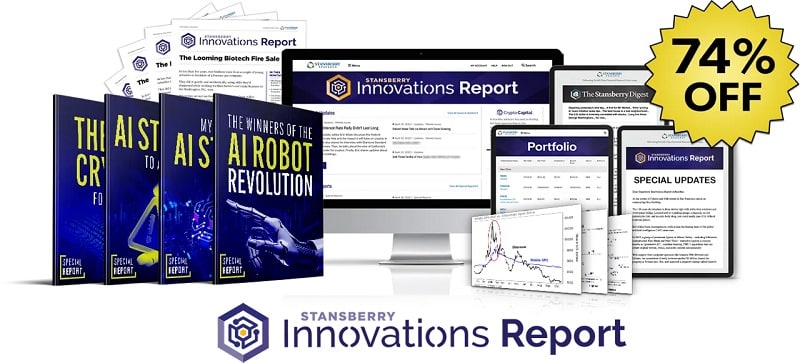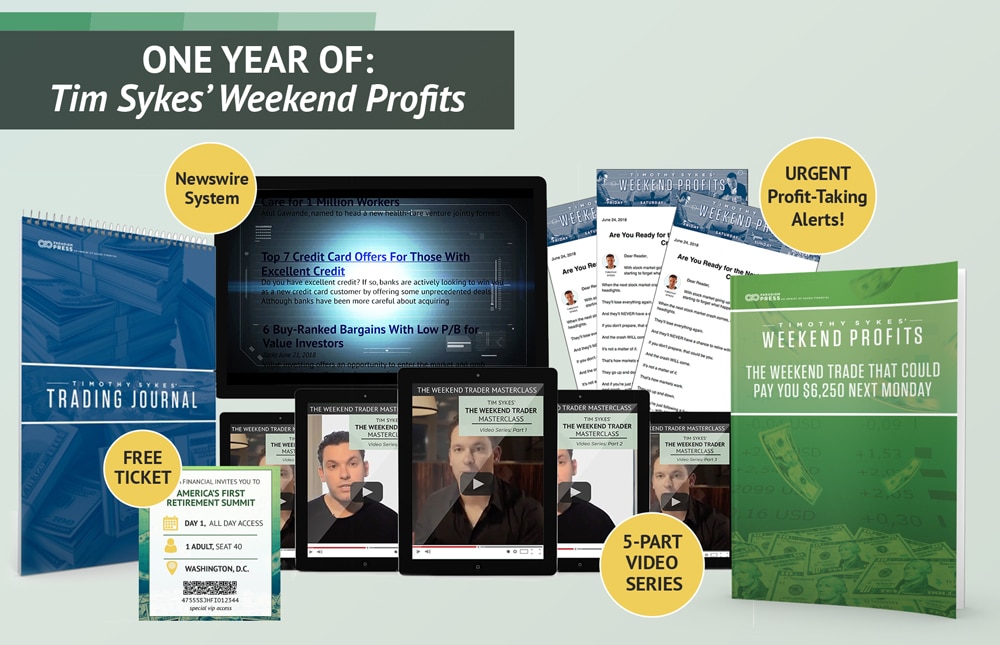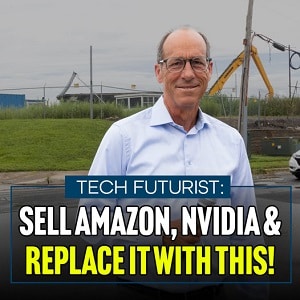Imagine a world where robots cook your meals, fold your laundry, and deliver your packages—all powered by artificial intelligence (AI) so advanced it rivals human capabilities.
This isn’t science fiction; it’s the imminent reality Eric Wade, a seasoned tech investor and former stockbroker, predicts will unfold by May 31, 2025. In a groundbreaking presentation, Wade unveils what he calls “the biggest investment opportunity of the next decade,” driven by the convergence of humanoid robotics and AI. Dubbed the “AI Robot Revolution,” this technological leap promises to reshape society and create unprecedented wealth for early investors.
In this article, we dive deep into Wade’s insights, exploring the technologies, the stocks he recommends, and the societal implications of this transformative era.
The Power of Technological Convergence
Wade’s thesis hinges on a concept called “convergence,” where two powerful technologies merge to create a third, exponentially more impactful innovation. History offers compelling examples:
-
The Smartphone Revolution: In 2007, Steve Jobs unveiled the iPhone, a device made possible by the convergence of advanced semiconductors and lithium-ion batteries. This fusion led to staggering returns for early investors: Nvidia and Broadcom, key semiconductor players, soared 26,000% and 15,000%, respectively, while Apple itself climbed 9,300%. Lithium producer Albemarle saw gains exceeding 1,000%.
-
Electric Vehicles (EVs): Tesla’s Roadster, introduced in 2008, capitalized on the convergence of power inverters and long-lasting batteries. The result? Tesla’s market cap skyrocketed, turning a $10,000 investment into $2.3 million by 2024, as global EV sales hit 17 million last year.
Wade argues that the convergence of AI and humanoid robotics will dwarf these past revolutions, with implications far beyond wealth creation. By May 31, 2025, he predicts this merger will unleash a $16 trillion economic opportunity, fundamentally altering how we live, work, and invest.
The Technologies Driving the Revolution
Humanoid Robotics: From Sci-Fi to Reality
Humanoid robots — two-legged machines that mimic human actions—aren’t new. The first, named Eric, debuted in the 1920s, powered by a single motor. Yet, recent advancements in sensors, batteries, cameras, chips, and software have transformed their potential.
According to research firm RethinkX, the cost of employing humanoid robots will plummet to $10 per hour in 2025, $1 per hour by 2035, and less than 10 cents by 2045. Compare this to California’s $20-per-hour minimum wage for fast-food workers, and the economic case for robots becomes undeniable.
These robots are no longer limited to simple tasks like lifting boxes. They can now operate 20 hours a day, require no breaks, and outperform humans in productivity—offering over 7,000 hours of work annually compared to a human’s 2,000.
Companies like McDonald’s are already testing fully automated locations in Fort Worth, Texas, where robots fry food and deliver orders via conveyor belts. Amazon employs 750,000 robots, dubbed Digit, to streamline warehouse operations, processing 306 items per second during peak seasons.
Artificial Intelligence: The Brain Behind the Brawn
AI is the second pillar of this convergence, already pervasive in daily life. From Siri and Alexa to Netflix recommendations and Google Maps navigation, AI powers countless interactions. Its economic impact is staggering: PwC estimates AI will add $15.7 trillion to the global economy by 2030. Stocks like Nvidia, up 600% since 2022, and Meta Platforms, up 460%, reflect the market’s enthusiasm. Lesser-known players like Applovin (2,300% gains) and Innodata (1,600%) underscore the breadth of AI’s influence.
The real game-changer, Wade argues, is when AI merges with robotics. Nvidia’s Jetson Thor, a supercomputer designed to power humanoid robots, could mark this tipping point as early as May 31, 2025. Jetson Thor will enable robots to learn, adapt, and interact with their environments, transforming industries from manufacturing to healthcare.
Why May 31, 2025, Matters
Wade circles May 31, 2025, as the pivotal date when Nvidia may unveil Jetson Thor, sparking an “investment frenzy.” This launch could catalyze the transformation of AI companies into AI robotics powerhouses, with hundreds of billions in capital flooding the sector. Silicon Valley is already preparing:
-
Microsoft has committed $80 billion to AI and robotics.
-
Google is investing over $100 billion.
-
Meta Platforms plans to spend $60 billion, while Amazon and Apple have allocated $30 billion combined.
-
Tesla, rebranding as an AI robotics company, aims to produce 10,000 Optimus robots by year-end, with Elon Musk predicting a $25 trillion valuation.
Startups like Figure AI, backed by Jeff Bezos, Nvidia, and OpenAI, are valued at $40 billion despite being just three years old. Wade warns that by the time mainstream media catches on, the biggest gains may be gone, making early action critical.
The Societal Impact: Opportunities and Challenges
The AI Robot Revolution promises profound changes, both exhilarating and unsettling.
A New Way of Life
By 2040, experts like Elon Musk and Midjourney’s David Holz predict 10 billion humanoid robots will inhabit Earth—enough for every person to have a personal assistant.
Robots could eliminate mundane tasks like grocery shopping, lawn mowing, or dishwashing. In healthcare, Intuitive Surgical’s robots already aid 2.7 million surgeries annually, while in retail, Amazon’s robots enhance delivery speeds. Restaurants like Chipotle and Sweetgreen use robots to prepare food, hinting at a future where human labor in repetitive roles becomes obsolete.
The Job Crisis
However, this revolution threatens millions of jobs. Goldman Sachs estimates AI could automate 300 million jobs globally, with Forbes suggesting up to 400 million. McKinsey predicts 30% of U.S. work hours could be automated. Low-wage sectors like retail (16 million U.S. workers), fast food, and warehousing are particularly vulnerable.
Automated checkouts at Walmart and chatbots replacing customer service roles are early signs of this shift. Economist Robert Shiller warns of “massive dislocations” if society doesn’t prepare, while Edward Snowden foresees social unrest without solutions like universal basic income.
The Wealth Divide
Wade highlights a growing economic divide. Since 2022, tech billionaires like Musk, Bezos, and Zuckerberg have added $408 billion to their wealth, while everyday Americans face $5 egg cartons and $18 Big Mac meals. The AI Robot Revolution could widen this gap, but Wade believes early investors can bridge it by capitalizing on the wealth transfer.
Eric Wade’s Investment Strategy
Wade, with a track record of prescient calls—buying WallStreet.com for $7 in 1994 and selling it for $1 million, and mining bitcoin early—offers a four-step plan to profit from the AI Robot Revolution.
Step 1: Buy BOTZ
The Global X Robotics and Artificial Intelligence Fund (ticker: BOTZ) is Wade’s accessible entry point. Holding about 50 stocks, including Nvidia and Intuitive Surgical, BOTZ offers diversified exposure to the sector. With $15 million in daily trading volume, it’s liquid and suitable for conservative investors. Wade predicts BOTZ could double in value over 5–10 years, though its broad holdings temper explosive gains.
Step 2: Invest in the Winners
In his report, The Winners of the AI Robot Revolution, Wade details three lesser-known stocks poised for significant upside:
-
A 140-Year-Old Robotics Pioneer: This company, a leader since launching the first commercial industrial robot in the 1970s, now builds “smart factories” for clients like Amazon and Ford. Its AI software enhances robotic efficiency, positioning it for growth.
-
A Strategic Acquirer: This firm spent $290 million to acquire a robotics business, becoming a global AI robotics leader. Serving Google, Toyota, and McDonald’s, it gained 40% last year but has room to run, backed by investors like Jim Simons and Paul Tudor Jones.
-
A Hidden Gem: This company’s robots handle products in millions of homes, from TVs to appliances. Its new 15-acre robotics facility signals ambition, yet it remains under the radar.
These stocks, Wade argues, are cheaper and offer higher upside than giants like Nvidia, which, at a $3 trillion valuation, may have limited room to grow.
Step 3: Bet on AI’s Backbone
Wade’s My No. 1 AI Stock report highlights a company powering AI chip design for Nvidia, Intel, and AMD. Its software is critical for self-driving cars, AI robots, and smart appliances, serving clients like Volvo and Samsung. Despite a recent dip due to an acquisition, Wade sees this as a buying opportunity, expecting the deal to fuel dominance in the AI chip market.
Step 4: Avoid the Losers
In AI Stocks to Avoid, Wade identifies four companies at risk. One is overvalued, another faces disruption from AI-driven layoffs, and others are misaligned with the revolution’s trajectory. Steering clear of these pitfalls is as crucial as picking winners.
Wade’s Track Record and Resources
Wade’s Stansberry Innovations Report boasts a 29% annualized return over five years, outperforming the S&P 500’s 18%. His readers have achieved 27 doubles, 20 triples, and 10 tenfold gains. While acknowledging risks, Wade’s focus on emerging technologies—AI, robotics, biotech, and more—has delivered consistent results.
Subscribers to the Stansberry Innovations Report receive:
-
Monthly issues with high-conviction investment ideas.
-
Access to Wade’s portfolio and past reports.
-
Three special reports: The Winners of the AI Robot Revolution, My No. 1 AI Stock, and AI Stocks to Avoid.
-
A bonus report, The Top Crypto for 2025, highlighting a promising cryptocurrency.
-
A 30-day risk-free trial with a money-back guarantee.
At a discounted rate from the standard $499, Wade’s service aims to democratize access to cutting-edge investment opportunities.
The Urgency of Acting Now
Wade emphasizes that timing is critical. Historical examples—the Internet’s rapid adoption, the iPhone’s dominance, Uber’s rise—show that disruptive technologies scale faster than experts predict. Bill Gates underestimated the Internet, Steve Ballmer dismissed the iPhone, and McKinsey misjudged cellphones by orders of magnitude. Wade warns that waiting until the AI Robot Revolution hits mainstream media, possibly by May 31, 2025, could mean missing the biggest gains.
Nvidia’s Cosmos project, unveiled at CES 2025, and Jetson Thor’s potential launch underscore the accelerating pace. As tech giants pour billions into AI robotics, and startups like Figure AI attract massive funding, the window for early investment is narrowing.
Conclusion: Will You Seize the Opportunity?
The AI Robot Revolution, as Eric Wade envisions it, is not just a technological shift—it’s a societal and economic watershed. By May 31, 2025, the convergence of AI and humanoid robotics could redefine industries, eliminate millions of jobs, and create trillion-dollar markets. For investors, the stakes are high: act now, and you could ride a wave of wealth creation; hesitate, and you may watch from the sidelines as others prosper.
Wade’s strategy—buying BOTZ, targeting lesser-known winners, betting on AI’s backbone, and avoiding losers—offers a roadmap to navigate this complex landscape. Backed by a proven track record and comprehensive research, his insights empower investors to capitalize on a $16 trillion opportunity. The question remains: will you be among the few who act before the revolution goes viral?
As Wade puts it, “The future is here… right now.” Don’t wait for the headlines to confirm what’s already unfolding. Take the first step today, and position yourself for the biggest investment opportunity of the next decade.
Frequently Asked Questions (FAQ) About the AI Robot Revolution and Eric Wade’s Investment Strategy
What is the AI Robot Revolution as described by Eric Wade?
The AI Robot Revolution refers to the convergence of humanoid robotics and artificial intelligence (AI), which Eric Wade predicts will transform society by May 31, 2025. This merger will create advanced robots capable of performing tasks like cooking, cleaning, and manufacturing, powered by AI that enables learning and environmental interaction. Wade sees this as a $16 trillion economic opportunity, reshaping industries and creating significant investment potential.
Why is May 31, 2025, significant?
Wade highlights May 31, 2025, as the potential launch date for Nvidia’s Jetson Thor, a supercomputer designed to power humanoid robots. This event could mark the official convergence of AI and robotics, triggering an investment frenzy and widespread media coverage. Wade believes acting before this date is critical to capturing the biggest gains.
What is technological convergence, and why does it matter?
Technological convergence occurs when two powerful technologies combine to create a new, more impactful innovation. Historical examples include the smartphone (semiconductors and batteries) and electric vehicles (power inverters and batteries). Wade argues that the convergence of AI and robotics will surpass these, driving exponential advancements and investment returns.
What is the Global X Robotics and Artificial Intelligence Fund (BOTZ)?
BOTZ is an exchange-traded fund (ETF) with the ticker symbol BOTZ, recommended by Wade as a diversified way to invest in the AI Robot Revolution. It holds approximately 50 stocks, including Nvidia and Intuitive Surgical, and trades $15 million daily, ensuring liquidity. Wade predicts BOTZ could double in value over 5–10 years, though its broad holdings may limit short-term explosive gains.
What stocks are included in Wade’s The Winners of the AI Robot Revolution report?
Wade’s report details three lesser-known stocks:
- A 140-year-old company pioneering “smart factories” for clients like Amazon and Ford.
- A firm that acquired a robotics business, serving Google, Toyota, and McDonald’s, with backing from top investors.
- A company whose robots handle household products, recently expanding with a 15-acre robotics facility.
Specific names and tickers are available in Wade’s Stansberry Innovations Report subscription.
What is Wade’s top AI stock, and why is it significant?
In My No. 1 AI Stock, Wade recommends a company that develops software for designing AI chips, used by Nvidia, Intel, AMD, and clients like Volvo and Samsung. This firm is critical to the AI ecosystem, and a recent acquisition positions it for growth, despite a temporary stock dip, making it a timely investment opportunity.
Which stocks should investors avoid, according to Wade?
Wade’s AI Stocks to Avoid report identifies four companies at risk: one is overvalued, another is threatened by AI-driven layoffs, and others are misaligned with the revolution’s trajectory. Details are provided in the report to help investors steer clear of potential losses.
How can I access Wade’s investment recommendations?
Wade’s recommendations are available through a subscription to the Stansberry Innovations Report, which includes monthly issues, three special reports (The Winners of the AI Robot Revolution, My No. 1 AI Stock, and AI Stocks to Avoid), a bonus crypto report, and access to his portfolio. A discounted, 30-day risk-free trial is offered, with a money-back guarantee.
What is the track record of the Stansberry Innovations Report?
The Stansberry Innovations Report has achieved an average annualized return of 29% over five years, outperforming the S&P 500’s 18%. It has delivered 27 doubles, 20 triples, and 10 tenfold gains, though Wade acknowledges risks and advises investing only what you can afford to lose.
What are the societal implications of the AI Robot Revolution?
The revolution could eliminate mundane tasks, enhance healthcare, and boost efficiency, but it also threatens 300–400 million jobs globally, particularly in retail, fast food, and warehousing. Economists warn of social unrest without solutions like universal basic income, and the wealth gap may widen, though early investors can benefit.
Is investing in the AI Robot Revolution risky?
Yes, all investments carry risk, and Wade emphasizes not investing money you can’t afford to lose. While BOTZ offers diversification, individual stocks in his reports may be volatile. However, Wade’s track record and focus on under-the-radar opportunities aim to balance risk with high reward potential.
How urgent is it to invest before May 31, 2025?
Wade stresses that acting before May 31, 2025, is critical, as the launch of Nvidia’s Jetson Thor could spark a market frenzy, driving stock prices higher. Historical examples (e.g., the Internet, iPhone) show that disruptive technologies scale rapidly, and waiting until mainstream media coverage could mean missing the biggest gains.
Can I trust Eric Wade’s expertise?
Wade has a proven track record as an early Internet entrepreneur (selling WallStreet.com for $1 million), bitcoin miner, and tech investor. His appearances on CNBC and coverage in Barron’s and the Washington Post bolster his credibility. His Stansberry Innovations Report reflects years of identifying profitable trends in AI, robotics, and other technologies.
What if I’m not familiar with investing in tech stocks?
Wade’s Stansberry Innovations Report is designed for investors of all levels, offering clear guidance on which stocks to buy, their ticker symbols, and how to purchase them. The subscription includes access to a Member Services team for support, and the reports provide detailed explanations to help novices understand the opportunities.
How do I get started with Wade’s recommendations?
To access Wade’s research, subscribe to the Stansberry Innovations Report through the provided secure order form, which offers a discounted rate and a 30-day risk-free trial. Upon subscribing, you’ll receive immediate access to all reports, monthly issues, and additional resources to guide your investments.

